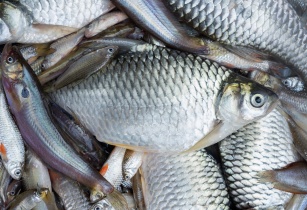More than 40 tilapia fish value chain experts and stakeholders convened at the shores of Lake Kariba for a multi-stakeholder partnership meeting to measure, learn and improve sector strategy performance and coordination
The strategy was launched in 2022, as a result of a two-year sector-wide dialogue, analysis and upgrading of Zimbabwe’s tilapia value chain spearheaded by FISH4ACP, a global fish value chain development initiative of the Organisation of African, Caribbean and Pacific States (OACPS) implemented by FAO. It foresees a nearly three-fold increase of farmed Nile tilapia production from 5,600-14,000 tonnes per year in 2032, driven by better access to inputs, services and markets for small-scale fish farmers.
“The Government of Zimbabwe believes that the value chain approach spearheaded by this project is the best as it promotes inclusiveness, economic growth and environmental sustainability, as we grow the fish industry,” said Milton Makumbe, director in the Department of Fisheries and Aquaculture, Ministry of Lands, Agriculture, Fisheries, Water and Rural Development. “Through this forum, we will further develop and strengthen our partnerships and map the way forward together during this implementation phase of the tilapia value chain strategy in Zimbabwe.”
The meeting involved reviewing the current project multi-stakeholder governance structure followed by review of progress made so far vis-à-vis development of SMART activity plans that respond to the current and projected needs of tilapia value chain in Zimbabwe. Stakeholders had the opportunity to agree on areas and timelines of implementation of the 2023 activity plans informed by documented current and previous value chain experiences in the country and the region.
The meeting decided to name the multi-stakeholder partnership 'Aqua-allies'. This led to the creation of three working groups on:
1. Production: focusing on alternative low-cost feeding regimes and high quality fish
2. Marketing: facilitating linkages and agreements between clusters, fingerlings and feed suppliers
3. Regulation: carrying out policy legislation review consultations with value chain stakeholders





